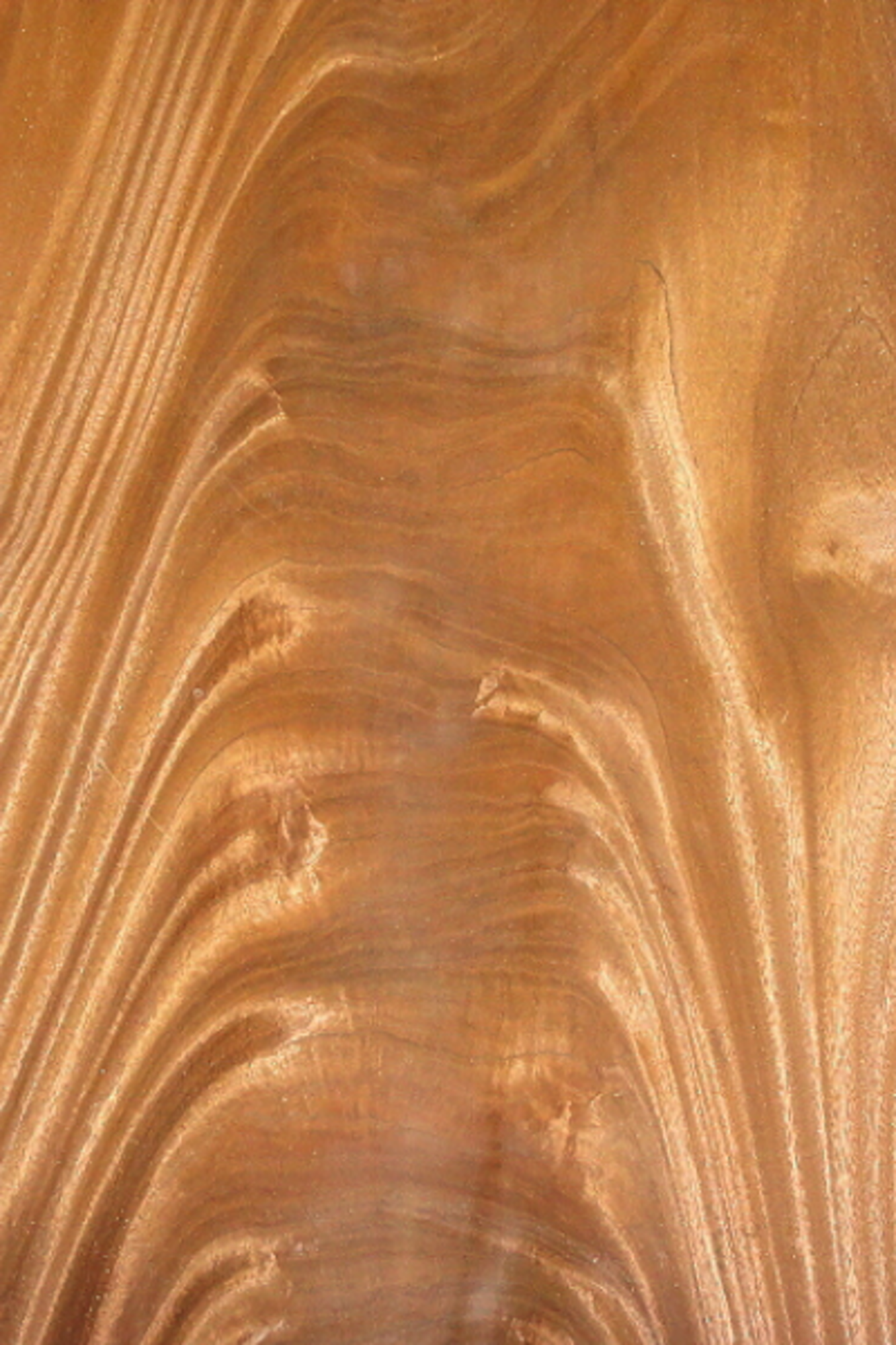Latin Name: Lovoa trichilioides
Common Name(s): African Walnut
Sources: West tropical Africa
|
Characteristics
|
Heartwood is a golden yellow to reddish brown, sometimes with darker streaks and veins. Color tends to darken upon exposure and with age. Sapwood is a medium yellow to light gray,and is generally narrow: it can be up to 3 inches (7.5 cm) wide, and is clearly demarcated from heartwood; a narrow transition zone is sometimes present between heartwood and sapwood. African Walnut also displays a ribbon-stripe figuring on quartersawn surfaces, similar to Sapele. |
|
Grain/ Texture
|
Grain is usually slightly interlocked, but is sometimes straight. Medium, uniform texture, with a high level of natural luster. |
|
Workability
|
Generally easy to work with both hand and machine tools, though care must be taken to avoid tearout when surfacing interlocked grain. Turns, glues, and finishes well. |
|
Uses
|
Veneer, plywood, flooring, furniture, cabinetry, and turned objects. |
|
Availability
|
African Walnut is seldom seen in lumber form in the United States, (with the exception of flooring planks), and is more commonly available in veneer form. Prices for African Walnut should be moderate for an imported wood. |


